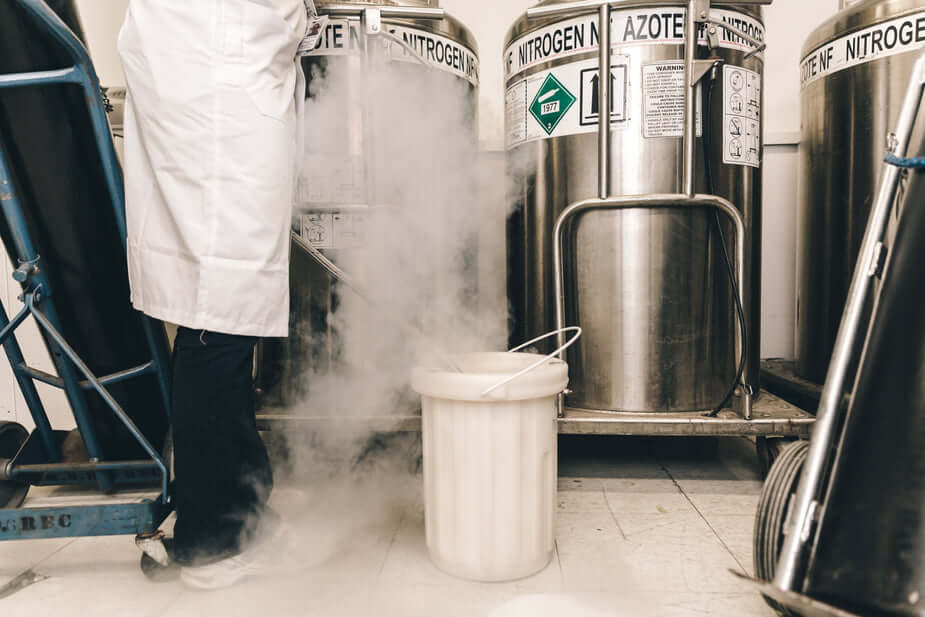Liquid nitrogen is an incredibly useful substance that has a variety of applications in different fields. It has a boiling point of -196°C and is commonly used in cryogenic applications, such as preserving biological samples, freezing food, and cooling electronic components. However, handling liquid nitrogen requires special precautions due to its extremely low temperature and potential hazards.

Below we have some tips on how to handle liquid nitrogen safely and effectively
1. Wear appropriate protective gear
When working with liquid nitrogen, it is important to wear appropriate protective gear, including gloves, a face shield or safety glasses, and a lab coat. This protective gear is essential as liquid nitrogen is extremely cold and can cause frostbite or other injuries if it comes into contact with your skin or eyes. It is also important to ensure that your protective gear is in good condition and does not have any holes or tears.
2. Store liquid nitrogen safely
When storing liquid nitrogen, it is essential to ensure that it is kept in a well-ventilated area. This is because liquid nitrogen can vaporize quickly, and the resulting nitrogen gas can displace the oxygen in the air, leading to asphyxiation. It is also important to ensure that the storage container is properly labeled and clearly marked as containing liquid nitrogen. The container should be made of materials that are compatible with liquid nitrogen, such as stainless steel, and it should be stored away from sources of heat or ignition.
3. Use appropriate handling equipment
To handle liquid nitrogen safely, it is important to use appropriate equipment such as cryogenic gloves, tongs, and dewars. Cryogenic gloves are designed to protect your hands from the extreme cold of liquid nitrogen, while tongs can be used to transfer objects or samples from one container to another. Dewars are insulated containers that are used to transport and store liquid nitrogen safely, and they come in various sizes depending on the amount of liquid nitrogen you need to handle.
4. Do not overfill containers
When filling containers with liquid nitrogen, it is important not to overfill them. This is because liquid nitrogen expands rapidly when it vaporizes, and overfilling a container can cause it to burst. It is recommended to only fill containers to about 80% capacity to allow for this expansion.
5. Do not seal containers tightly
It is important not to seal containers tightly when storing liquid nitrogen. This is because the nitrogen gas that results from vaporization needs to escape to prevent pressure buildup. If a container is sealed too tightly, the pressure can build up and cause the container to rupture or explode. To prevent this, containers should be stored in a well-ventilated area and should not be sealed tightly.
6. Avoid splashing liquid nitrogen
When pouring or transferring liquid nitrogen, it is important to avoid splashing it. Liquid nitrogen can cause serious injuries if it comes into contact with your skin or eyes, and it can also damage equipment. To prevent splashing, it is recommended to use a slow and steady pouring motion and to use appropriate handling equipment such as tongs.
7. Do not use glassware with liquid nitrogen
It is important not to use glassware with liquid nitrogen. This is because glass can become brittle and shatter when exposed to extremely cold temperatures, and this can cause serious injuries. Instead, it is recommended to use plastic or metal containers that are compatible with liquid nitrogen.
In conclusion, liquid nitrogen is a useful substance that has many applications in various fields. However, handling liquid nitrogen requires special precautions to ensure safety. By wearing appropriate protective gear, storing liquid nitrogen safely, using appropriate handling equipment, avoiding overfilling containers and splashing, and not using glassware, you can handle liquid nitrogen safely and effectively.